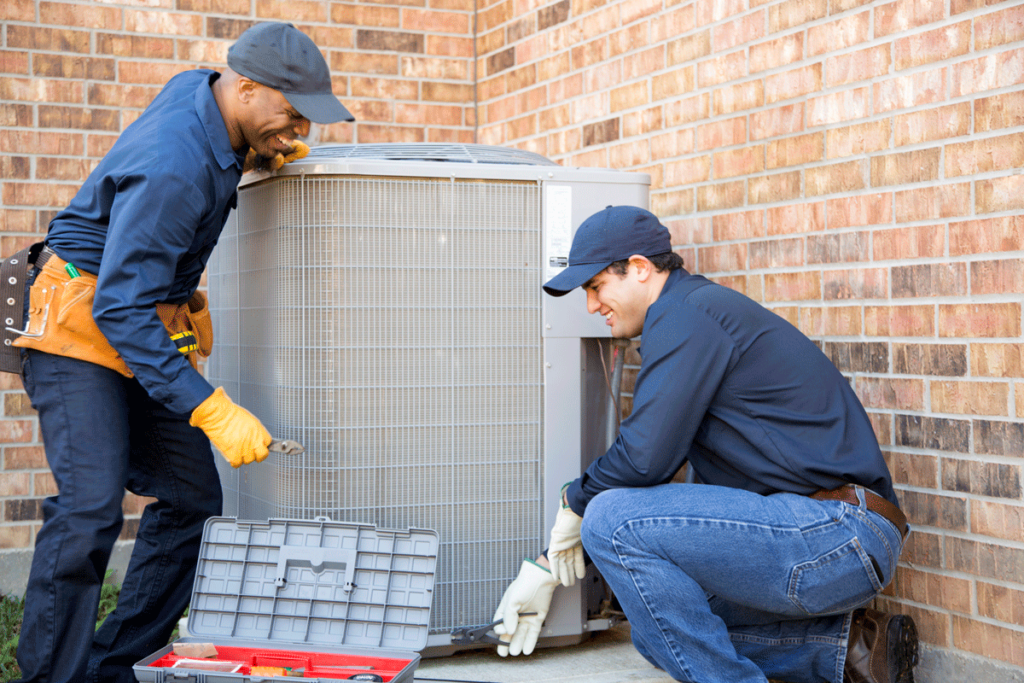Summer is winding down, but the heat may not yet be quite finished in the East Metro area. You want your home’s A/C to continue cooling, and Ernst Heating & Cooling is here to help. You’ve probably heard about A/C terms like compressors and condensers, but you may not know how each one works to keep your home comfortable. The names may sound similar, but each is a separate component designed to remove uncomfortable heat from your home’s interior and replace it with cool relief. Read on to learn more about compressors, condensers, and how everything works with your HVAC system.
Taking a part
Your home’s A/C unit has two primary locations – the unit you see in your backyard and the one that is inside your home. The outdoor unit contains your compressor and condenser. They work together to transform the refrigerant running through the system. The compressor squeezes the refrigerant while it’s in a gaseous state, while the condenser converts the refrigerant gas back into a liquid.
Still, puzzled? Read on.
The role of the refrigerant
Your home’s A/C unit relies on refrigerant to absorb the heat in your home and cool the air blowing through the ducts. Refrigerant is cool because it can change from a gas to a liquid and back to a gas. When refrigerant absorbs your home’s heat, it transforms from a low-pressure gas to a high-pressure vapor. When the refrigerant moves into your condenser coils, it releases its heat into the outdoors and changes back into a liquid.
Did you not know you’d be getting a physics lesson? Let’s read how these processes work together in your A/C unit.
How it works
Your home’s indoor unit contains an evaporator coil, which depressurizes the refrigerant, turning it into a cold gas. The A/C fan pulls warm air from the house and is blown over the evaporator coil. The evaporator coil absorbs the heat from the air and releases the cool air back into your home. As it absorbs the warmer air, it changes from a liquid to a gaseous state and moves toward the compressor. The compressor squeezes the gas tightly, raising its pressure and turning it into a superhot liquid vapor. The hot vapor shoots into the condenser coils, which you may be able to see if you investigate your outside unit. A high-powered fan blows over these condenser coils, blowing the heat outdoors and cooling down the refrigerant. The now cool refrigerant moves back to the evaporator coil, where the process begins again.
In summary
- Heat is absorbed by an evaporator coil within your home and turns refrigerant from liquid to gas.
- A compressor raises the pressure of the refrigerant gas, turning it into a superheated vapor and sending it to the condenser.
- The condenser disperses the gas through the coils, which are exposed to outdoor air. As the condenser fan blows across the coils, they release the heat and lower the temperature of the refrigerant, changing it back into a liquid.
- The now-cool refrigerant travels back indoors to the evaporator, where the process repeats itself.
Your home’s A/C system is an intricately built machine. When it’s running well, you may be oblivious to everything that’s going on behind the scenes. But if you’re noticing a stuffy home on an unseasonably warm fall day, reach out to Ernst Heating & Cooling for help. Our trained HVAC technicians understand how your system works, and we can restore you to the comfort you crave. Call us at 618.217.1836 or schedule an appointment online now.


